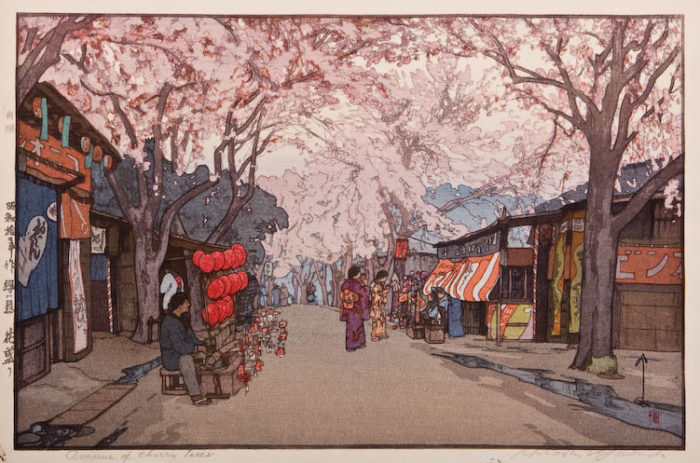
Japanese managers working in the U.S. often complain that their American employees are always making excuses. But are the Americans really intending to make excuses, or are they just acting in a manner consistent with American culture?
When working with Japanese participants in my cross-cultural seminars, invariably I am asked questions like “Why do Americans make so many excuses?” and “Why don’t Americans own up to their mistakes and admit what they have done wrong?” This is one of the most common concerns of Japanese who work with Americans, and leads to a lack of trust in working relationships. But it is something that most Americans who work with Japanese are not aware of. This article explores the root of these concerns, and how Americans and Japanese can work to bridge this gap.
Refusal to hansei
When Japanese say that Americans don’t “own up to their mistakes,” what they mean is that Americans are not engaging in a behavior that is called hansei in Japanese. Hansei is a term that is extremely difficult to translate into English. “Reflection on areas for improvement,” “self-criticism,” and “thinking about how one could have done better” are probably the closest. We don’t have a commonly-used, concise term for this in English because any hansei-ing we do tends to be a private matter, conducted in our heads. For Japanese, hansei is something done out loud, in groups.
For example, one of my Japanese friends works on an evening TV news program. Everyday, after the program is done, they all meet for a hansei-kai (hansei meeting), a sort of post-mortem to pick apart any faults in that day’s program, in the interest of doing better the next time. You’ve probably observed this hansei-kai phenomenon in meetings you’ve attended with Japanese colleagues. For westerners, particularly Americans, who are focused on “accentuating the positive” and “looking on the bright side”, this hansei activity can seem unduly negative. But Japanese see hansei as a critical step in any process. It’s the “check” phase of the famous “Plan-Do-Check-Act” cycle that Japanese business people use to govern any activity.
Hansei forms the foundation of Japanese thinking about the proper way to work, ensure quality, and interact with other people. That’s why Japanese are easily irritated when foreign colleagues don’t exhibit hansei behavior.
This feeling is so strong among Japanese that when I titled my latest book in Japanese “How to Deal with Americans who Don’t Hansei” (Hansei Shinai Amerikajin wo Atsukau Hoho, ALC Press) it took off like wildfire. It’s now in a second printing, which is rare in the Japanese book market. When I tell a Japanese person the title, I invariably get a big reaction, either laughing out loud or at least a chuckle. The title hits so squarely on their frustrations with American colleagues that it strikes them as funny.
Lack of apologizing
What makes Japanese colleagues think that the Americans they are working with aren’t hansei-ing? It’s the absence of apologies in our speech. The oft-apologizing Japanese is something of a hackneyed stereotype, but the reality is that Japanese do indeed apologize extremely frequently. There are dozens of ways to say “I’m sorry” in Japanese, many more than in English, and they are all used liberally in Japanese conversations.
One reason that Japanese apologize more is that they interpret the meaning of apology differently than we do. For westerners, particularly legalistic Americans, an apology means saying that whatever happened was completely one’s fault. But for Japanese, an apology is more of a social smoother, an expression of recognition for the other person’s feelings or inconvenience. In this sense, a Japanese apology is more akin to our saying “I’m sorry that your dog died.” When we say “I’m sorry” in this way, we aren’t taking responsibility for the death of the dog, we are acknowledging how the other person feels. Also, apologies for Japanese carry the nuance of hansei: “Even though what happened wasn’t completely my fault, I recognize that there are some things that I could have done better”
An incident that happened at one Japanese company is a good example of this apology-as-hansei phenomenon. A cargo ship carrying their products got caught in a typhoon and sank. The Japanese company demanded a formal apology from the non-Japanese shipping firm. The shipping firm refused to apologize, on the grounds that a typhoon was something they could not control (an “act of God”), and thus the incident was not their fault. Faced with this refusal to apologize, the Japanese company was furious, and refused to deal with that shipping company ever again.
Of course the Japanese realized that the typhoon was not caused by the shipping company. But they would have viewed an apology as symbolic of the company’s commitment to making sure that such an accident did not take place again in the future. From their point of view, there were lots of steps that the shipping company could take to help prevent similar accidents, such as building sturdier ships or getting more accurate weather forecast information. An apology would have shown their willingness to explore such areas of potential improvement.
Making too many excuses, not taking responsibility
In addition to lack of apologies, Japanese are also aggravated by what they perceive to be “making excuses.” In many cases, the westerner is not necessarily trying to make excuses, but instead is trying to explain the factors that caused the problem. But because this explanation process usually dwells on factors outside of one’s control, rather than on the areas one could have done better oneself (as would be the focus of hansei), it is perceived quite negatively by Japanese.
Japanese take very seriously the concept of personal responsibility. If you are in charge of something, if something goes wrong you are expected to take responsibility for it. That is why Japanese company presidents step down when a problem or scandal erupts at their firm, even if they personally were not involved in causing it. When westerners refuse to apologize and instead dwell on all the extenuating circumstances that caused the problem, Japanese view this as an attempt to evade one’s responsibility.
At one Japanese company, a sales division had turned in particularly poor results. The Japanese President called in the American division manager to discuss the situation with him. The American manager proceeded to explain all the extenuating factors that had caused the poor results, from the manufacturing division’s lack of responsiveness to problems with the distribution process. The more he explained, the more upset the President became. The President continued to press, hoping to hear a hansei-type expression of contrition. Then, in frustration the sales manager said the worst thing possible: “It’s not my responsibilty!” At this, the Japanese president became absolutely apoplectic, screaming and turning red in the face, and the interaction went downhill from there.
What aggravated the Japanese president was the contrast from how a Japanese subordinate would have handled the situation. A Japanese subordinate would have started out apologizing, and then go on to explain how he planned to do better in the future. He would have accepted the displeasure of his boss rather than trying to refute it. He would have acknowledged his role in improving the situation, rather than trying to explain away what had happened by dwelling on factors outside his control. For a Japanese used to this type of approach, the typical American response is shocking and aggravating.
It’s rare for Japanese to lose their temper at non-Japanese, but a lack of hansei is one of the things that can provoke an angry outburst, as in the case of the President mentioned above. Or, more typically, your Japanese counterpart will keep his opinion to himself, writing you off in his mind as just another American who makes a lot of excuses. You could lose his trust and never be told why.
Solutions
For Americans, the bottom line on the hansei phenomenon is, be willing to apologize, admit where you could have done better, avoid blaming what happened on things out of your control, and explain what you plan to do to avoid the problem happening again. Taking this approach will cause your Japanese colleagues to view you as “one of the few Americans who actually understands.”
For Japanese, changing your approach can significantly improve the quality of responses you get from your American colleagues. Pressing for an apology will only cause Americans to get defensive, and as mentioned above, they are not likely to apologize anyway. Trying to ferret out the root causes can also have the same negative effect, because Americans will tend to interpret it as finger-pointing, trying to place the blame on someone. This is especially true when phrases such as “Why did this happen?”, “Who did this”, and “What caused the problem?” are used.
These approaches fail in the U.S. for three reasons. First, they are designed to force someone to state what they did wrong – in other words, to hansei. This runs against the grain of U.S. society, because in our competitive world, telling others your weaknesses is a sure way to lose their confidence. In the U.S., the emphasis is on self-promotion and thinking positively, so self-criticism is uncomfortable. Those who do criticize themselves to others are told “don’t beat yourself up” or “don’t be so down on yourself,” or to use the popular self-help lingo, “stop the negative self-talk.” Second, Americans, either consciously or subconsciously, often fear becoming the scapegoat for problems. Admitting you are at fault can lead to negative consequences, such as a smaller bonus or even getting fired. Third, the hansei-style approach emphasizes analyzing what happened in the past. This is contrary to the American style of looking to the future. As a nation of immigrants and pioneers with a short history and few entrenched traditions, we are accustomed to looking forward rather than dwelling on the past. Our culture’s popular phrases such as “Don’t cry over spilt milk”, “tomorrow is another day”, “today is the first day of the rest of your life,” “if at first you don’t succeed, try try again,” and “pick yourself up, dust yourself off, start all over again” reflect this mentality. Rather than analyzing what happened before, we prefer to look ahead and move forward.
So, for Japanese, the question remains of how to address problems and ensure improvement, while not forcing Americans to engage in culturally-uncomfortable hansei-type activities. I recommend using one of the following phrases. All of these imply a positive, forward-thinking approach while emphasizing the importance of addressing the problem.
- What can we do to avoid this problem in the future?
- How can we make sure this doesn’t happen again?
- How can we prevent a re-occurrence of this incident?
- What can we learn from this?
- How can we do better next time?
- What ideas do you have for improving in the future?
By phrasing these as questions, it forces the person involved to become actively engaged in suggesting solutions. These phrasings also leave little room for “excuse” type discussion of extenuating circumstances, because they require a constructive response. The use of “we” is also strategic because it emphasizes a shared responsibility for addressing problems – a “we’re going to solve it together” type of approach rather than a finger-pointing blame-placing.
For both sides, designating a shared set of problem-solving tools can help address this issue. This may involve training all employees on Plan-Do-Check-Act or some other process. When everyone uses the same techniques, the opportunity for misperception is reduced.
Related articles
Too early for cherry blossoms!
Japan’s cherry blossom season is peaking at the earliest time since records began over 1,200 y
Japanese Communicative Ambiguity: “When does Yes mean Yes?”
When Yes means Yes, No or Maybe. I am often asked by Americans and other Westerners working in Japan
Keeping things tidy is everyone’s job in Japan
I find litter and wastefulness quite upsetting and often stress in my training how important the tid





